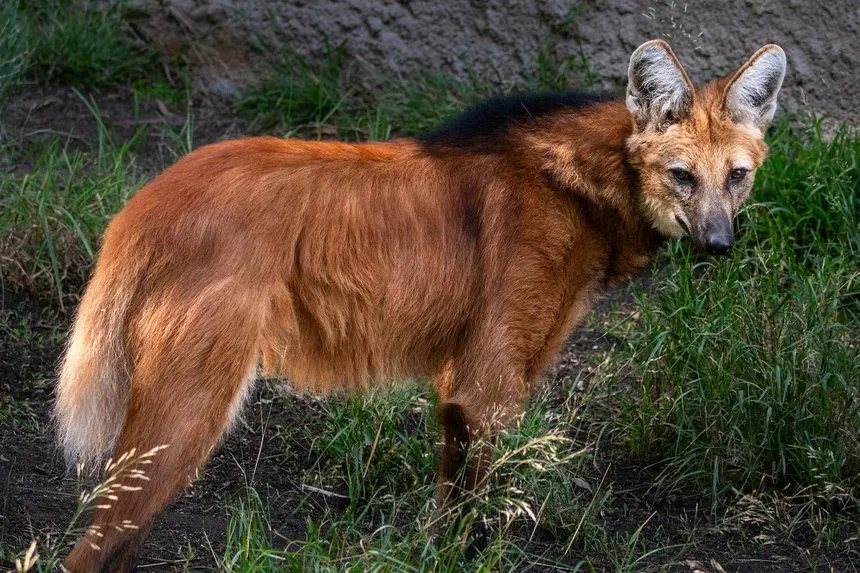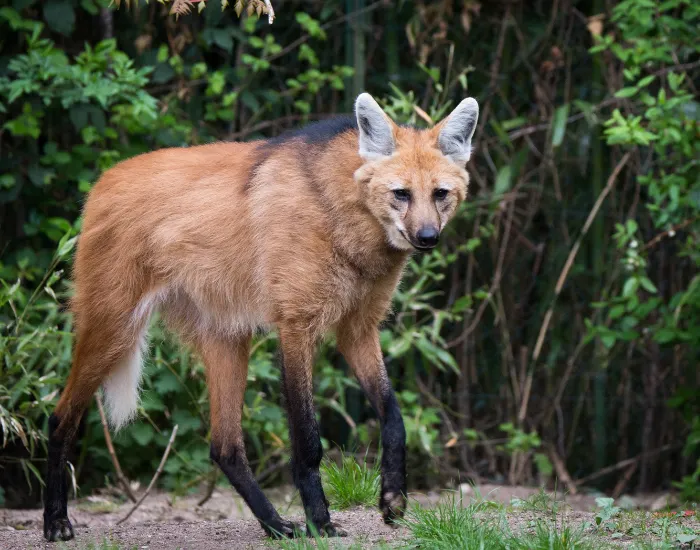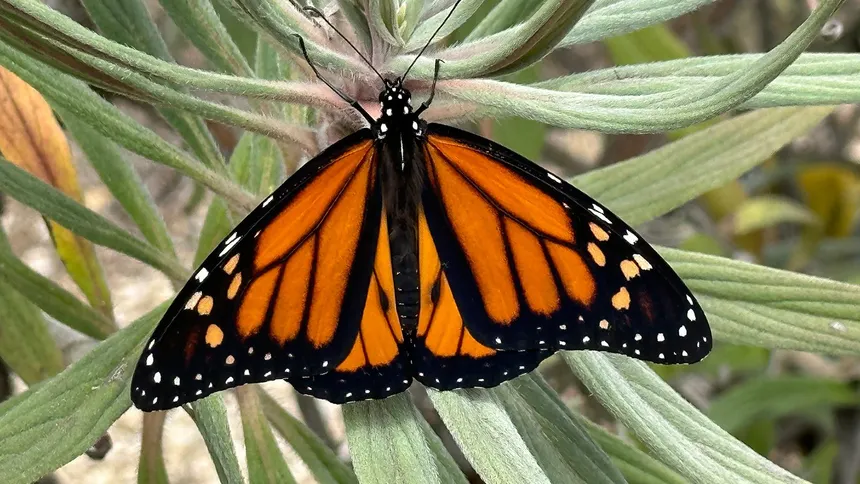Maned Wolf Facts

The maned wolf (Chrysocyon brachyurus) is one of the most intriguing and unique wild canids in the world. Despite its name and fox-like appearance, it is neither a true wolf nor a fox, but the only member of its own genus. With its striking long legs, reddish coat, and mysterious nature, the maned wolf is a rare sight in the grasslands of South America. Here’s a detailed look at its habitat, lifestyle, and fascinating characteristics.
Habitat and Range
The maned wolf is native to central and eastern South America, mainly in Brazil, Paraguay, Bolivia, Argentina, and parts of Peru. Its preferred habitat is the cerrado—a vast tropical savanna with tall grasses and scattered shrubs. These long legs are perfectly adapted for spotting prey above tall grass and covering large distances across open landscapes.
Physical Characteristics
- Height: Up to 90 cm (35 in) at the shoulder, making it the tallest wild canid.
- Weight: Around 20–25 kg (44–55 lbs).
- Coat: Golden-red fur with black legs, a distinctive black mane, and white markings on the throat and tail tip.
- Long Legs: An adaptation to see over grass and move quickly across open terrain.

Diet and Feeding Habits
The maned wolf is omnivorous and has a highly varied diet. While it hunts small mammals, birds, and reptiles, over 50% of its diet consists of fruit, particularly the lobeira (wolf apple), which helps in seed dispersal. This mix of meat and fruit makes it important for both predator-prey balance and plant regeneration.
Behavior and Lifestyle
- Solitary Nature: Unlike true wolves, maned wolves do not form packs. They are mostly solitary except during mating season.
- Communication: They use scent marking, urine, and a deep, loud bark-like call known as a “roar-bark” to signal territory or attract mates.
- Territory: A single maned wolf’s home range can span several dozen square kilometers.
Reproduction and Offspring
Mating season usually occurs between April and June, with pups born after a 60–65 day gestation. A litter typically contains 2–5 pups, which are black at birth and gradually develop the adult reddish coat over the first months of life. Both parents may take part in raising the young.
Conservation Status
The maned wolf is classified as Near Threatened by the IUCN. Major threats include:
- Habitat loss from agricultural expansion.
- Road accidents, as they roam wide areas.
- Human conflict due to livestock predation fears.
Conservation efforts include habitat protection, anti-poaching measures, and environmental education.
Fascinating Facts
- Despite its name, it is not closely related to wolves, foxes, or coyotes—it’s in its own unique evolutionary branch.
- Its long legs are the result of convergent evolution, similar to antelopes in open grasslands.
- The strong odor of its urine has earned it the nickname “skunk wolf” in some regions.
- The maned wolf plays an essential role in maintaining the health of the cerrado ecosystem through seed dispersal.

Conclusion:
The maned wolf is a remarkable example of adaptation and ecological importance. Its solitary lifestyle, unusual diet, and long-legged elegance set it apart from other wild canids. Protecting this unique species means safeguarding not only an extraordinary animal but also the delicate grassland ecosystems of South America.



